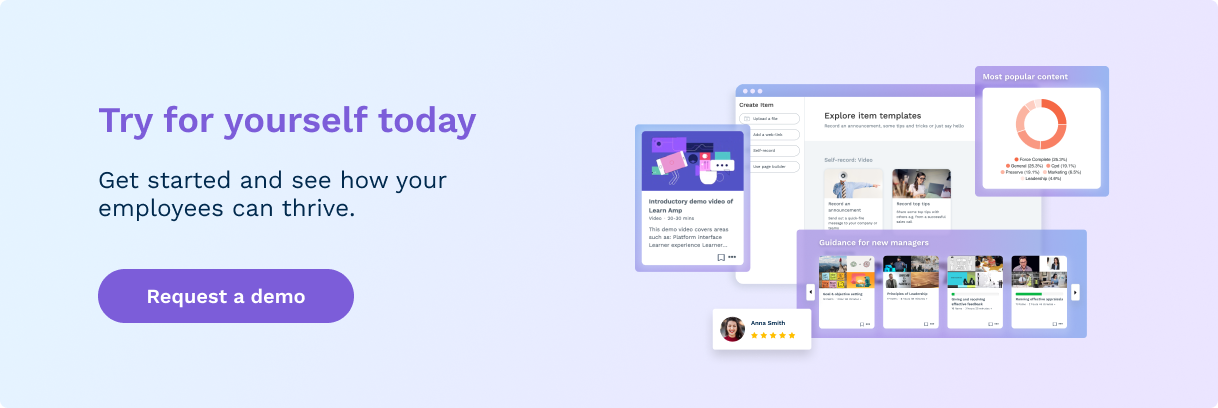In today’s fast-paced business environment, continuous learning and development are crucial for maintaining a competitive edge. Companies need to ensure their employees are not only keeping up with industry changes but also actively developing their skills and knowledge. One powerful tool that can help organisations achieve this is the OKR framework—Objectives and Key Results. While OKRs are often associated with goal setting and performance management, their role in driving continuous learning and development is equally significant.
What Are OKRs?
Before diving into how OKRs drive continuous learning and development, let’s briefly revisit what OKRs are. The OKR framework is a goal-setting methodology that helps organisations align their objectives with measurable outcomes.
-
Objectives are the goals you want to achieve, which should be ambitious, time-bound, and clearly defined.
-
Key Results are the specific, measurable actions that lead to achieving the objective. They should be quantifiable and provide clear indicators of progress.
For example, an objective might be to “Improve employee skill levels in data analysis,” with key results like “Complete 80% of employees' advanced data analysis training by Q3” or “Increase the average score on data competency assessments by 20%.”
The Synergy Between OKRs and Continuous Learning
OKRs provide a structured framework that naturally encourages continuous learning and development. Here’s how:
1. Aligning Learning with Business Goals
One of the core strengths of OKRs is their ability to align individual and team efforts with broader business goals. When organisations set objectives related to learning and development, they ensure that the skills employees are acquiring directly contribute to the company’s success.
For example, if a business objective is to expand into a new market, the learning-related OKRs might focus on language training, cultural understanding, or new market analysis skills. This alignment ensures that learning is not just an add-on but a strategic activity that drives the company forward.
2. Fostering a Growth Mindset
OKRs encourage a culture of ambition and stretch goals, which are key components of a growth mindset. When employees are given challenging objectives that require them to develop new skills or deepen their knowledge, they are pushed out of their comfort zones and into a learning mindset.
This approach helps employees see learning as an ongoing process rather than a one-time event. It encourages them to seek out opportunities to improve and innovate continuously, which is essential for both personal and organisational growth.
3. Encouraging Accountability and Measurement
One of the main benefits of OKRs is that they introduce a level of accountability and measurement that can often be missing in traditional learning and development programs. With clear key results tied to learning objectives, employees have a roadmap to follow and metrics to hit.
For example, instead of a vague goal like “Improve leadership skills,” an OKR might state, “Complete leadership training and mentor three team members by the end of Q2.” This specificity ensures that progress is measurable, and accountability is built into the learning process.

|
4. Facilitating Regular Check-Ins and Feedback
OKRs work best when they are reviewed regularly, typically in quarterly cycles. This frequent check-in process provides the perfect opportunity for managers and employees to discuss progress, identify challenges, and adjust learning objectives as needed.
Regular feedback loops are crucial for continuous learning. They allow employees to understand how they are progressing and where they might need additional support or resources. This iterative process ensures that learning objectives remain relevant and achievable throughout the performance period.
5. Driving Cross-Functional Learning and Collaboration
OKRs often involve cross-functional teams working together to achieve a common objective. This collaboration can be a powerful driver of continuous learning, as employees are exposed to different perspectives, skills, and knowledge areas.
For example, a product development objective might require input from marketing, engineering, and customer support teams. As these teams work together, they learn from one another, gaining insights into different aspects of the business that they might not have encountered in their usual roles.
6. Promoting a Culture of Transparency and Shared Success
Transparency is a key principle of the OKR framework. By making objectives and key results visible across the organisation, everyone can see how their work contributes to the company’s overall success. This transparency promotes a culture of shared learning, where successes and failures are openly discussed and used as learning opportunities.
When employees see how their colleagues are tackling learning and development objectives, it can inspire them to take on similar challenges. This shared commitment to growth creates a positive feedback loop, reinforcing the importance of continuous learning across the organisation.
|
Implementing OKRs for Learning and Development
To effectively use OKRs to drive continuous learning and development, organisations should consider the following steps:
-
Set Clear Learning Objectives: Define specific, measurable objectives that align with your business goals. Ensure that these objectives are ambitious enough to encourage growth but achievable enough to maintain motivation.
-
Identify Key Results: Establish clear key results that outline what success looks like for each learning objective. These should be quantifiable and time-bound to ensure progress can be tracked.
-
Regularly Review and Adjust: Schedule regular check-ins to discuss progress, challenges, and adjustments. Use these reviews to provide feedback, offer support, and make any necessary changes to the objectives or key results.
-
Encourage Collaboration: Promote cross-functional collaboration by setting objectives that require input from different teams. This not only drives learning but also strengthens relationships and knowledge-sharing across the organisation.
-
Celebrate Successes and Learn from Failures: Make sure to celebrate when learning objectives are met and key results are achieved. Similarly, use any setbacks as opportunities for learning and improvement.
The Power of OKRs in Learning and Development
OKRs are more than just a goal-setting framework—they are a powerful tool for driving continuous learning and development. By aligning learning objectives with business goals, fostering a growth mindset, encouraging accountability, and promoting collaboration, OKRs can transform how organisations approach employee development.
In a world where continuous learning is key to staying competitive, implementing OKRs can help ensure that your team is always growing, always improving, and always ready to tackle the next challenge. Whether you’re looking to upskill your workforce, drive innovation, or simply keep pace with industry changes, OKRs provide a structured yet flexible approach to achieving your learning and development goals.






